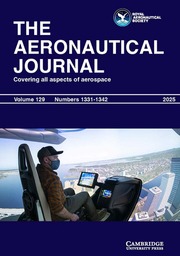Article contents
Evolution of the high performanceglider
Published online by Cambridge University Press: 04 July 2016
Extract
Unlike commercial air transport and military aircraft,the high performance glider was developed as an endin itself so that individual pilots could achieveextended flights using only energy present in theair. From modest beginnings in the first two decadesof this century the best gliders available today areable to fly 60 miles from a height of about 6000 ftin no wind and without upcurrents. Using thermalsand other available lift in the air these glidersare capable of flying a distance of 1000 miles in aday. The realisation of such performance efficientgliders was possible because the design problemsattracted top quality aerodynamicists. Germany led,and still leads, because German universities saw, inglider development, a fine training ground for youngaeronautical engineers — initially encouraged, ofcourse, by the Versailles Treaty which forbade themanufacture of powered aircraft at the end of WW1.Now superb gliders exist but because of their cost,complexity and size they can be afforded and/orflown by only a relatively small number of pilots.This paper follows the historical development ofgliders, the arrival of hang gliders and paraglidersand considers the way forward for motorlessflight.
Information
- Type
- Research Article
- Information
- Copyright
- Copyright © Royal Aeronautical Society 1995
References
- 2
- Cited by

